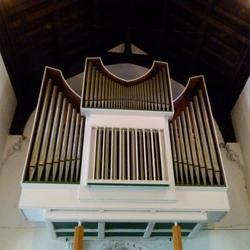
F. H. Browne & Sons, Ltd., of Kent, UK, used Solid State Organ Systems MultiSystem II in the overhaul and re-electrification of the Hill, Norman & Beard organ at St. Helen’s Church, Wheathampsted, UK.
Solid State was chosen because of the flexibility for future additions, service reliability, and quick customer service.
For information: www.ssosystems.com.


